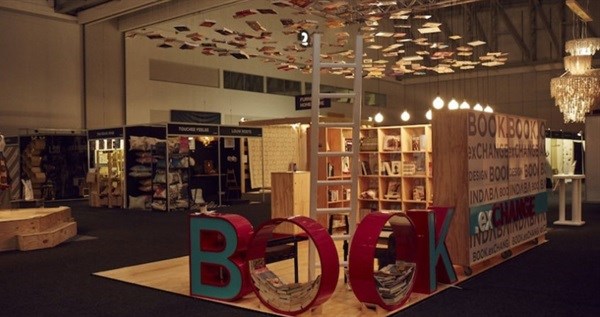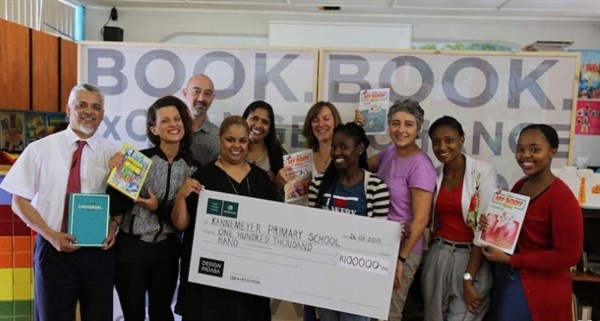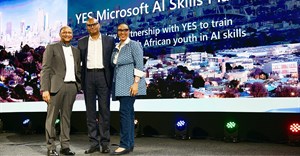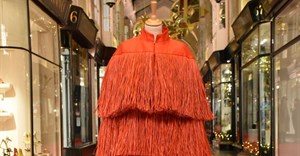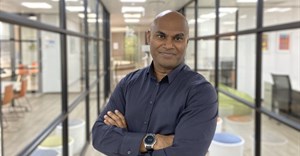Trending




 6 tips to help scale up your small businessGrant Lapping
6 tips to help scale up your small businessGrant Lapping Honor rises to number one in China with excellent Magic6 ProLindsey Schutters
Honor rises to number one in China with excellent Magic6 ProLindsey Schutters
[Design Indaba 2016] Continental design disruption
If you’ve been keeping track of my pre-Design Indaba coverage, you already know how this year’s rendition has evolved since the very first ‘un-conference’ and what to expect from the 2016 rendition later this week. But there’s so much more to Design Indaba than that, especially as creator Ravi Naidoo’s intention with Design Indaba from the start has been to change behaviour, shift perceptions and activate new projects and new ways of seeing projects of the creative community and the country and across Africa.
Here, Naidoo elaborates on how the conference will be more experiential and immersive than ever before, as well as how its activism mindset intends making our local creative industries more adventurous in thinking of global success…
1. Why the need to make Design Indaba 2016 more experiential and immersive?
![[Design Indaba 2016] Continental design disruption](https://biz-file.com/c/1602/330682.jpg)
Naidoo: It’s one way to maintain our competitive edge. We wanted to understand that presentations can become very formulaic. There’s the TED format, which is 18-minutes and a Powerpoint. It’s a format that’s used all around the world so there is some merit in that, but we prefer to offer diversity and eclecticism, so you don’t quite know what you’re going to get next. There are multiple formats through which you are able to tell your story, and we wanted to explore every single one of them. So it’s really the death of the formula – we smash it in celebrating raging eclecticism, as Design Indaba going forward isn’t just about getting bigger, but also about getting weirder!
2. Let’s touch on one aspect of getting bigger: Expanding your reach and inspiring the design industry in the rest of Africa.
Naidoo: South Africa has huge potential to become a globally outsourced hub for creativity, much the way India is for IT, South Africa should be for creativity, so if there’s any kind of silver lining in the economic cloud around our currency, it’s that it makes us so much more viable. In addition to inspiration, Design Indaba gives serious credibility and support to the creative community as both a platform and an ability for the creative community to communicate with greater society – from government, through to private sector. We then seed some of these ideas through and convert ideas into reality.
We’ve long held that ideas and intellectual capital will be the X factor in the transformation of the African creative commune. All the things that we’ve done are done in this absolutely relentless pursuit of finding new models and new ways of reimagining Africa. For example, this year’s simulcast will be available in most local cities, and we’ve even expended to Windhoek. We’re very excited about that as we want this to be a pan-African event. We’re currently simulcasting to two countries in Africa, so we have 52 more to go!
Africa is going to be a wonderful theatre for commerce and for social entrepreneurship, for doing business for social impact. It’s going to be the place where we’ll find the most radical change, particularly over the ensuing 10 to 20 years. We’ve kind of bet the farm in Africa with Design Indaba. It’s taken a long while to see it, but I think with the advent of tech – everyone’s connected – and with the dividends from bandwidth, from access to better education and the like, the economy is growing apace.
3. Tell us more about emerging talents in Africa and what sets them apart.
Naidoo: I’m particularly intrigued by a band of young architects speaking at Design Indaba this year who spurned the idea of the private sector and building villas for the rich. Instead, they entirely focus their practise on public spaces, enumerating a lot of the poor in particular, whether it’s in the grungy, emerging parts of downtown Joburg or in Kigali, and the building of hospitals and schools so badly needed in this previously war-torn country, through to re-imagining the urban framework. These are these new-age architects from Africa who have given themselves a wider mandate and gone beyond just finding commissions, putting themselves in harm’s way just to find out how they can actually affect change for the public and the people at large.
4. How do you intend spreading the concept of activism across the continent?
Naidoo: We’ve always had an activist orientation at Design Indaba, so in almost everything that we do, we trying translate it into more than the talk. The corollary to the ‘think tank’ is the ‘do tank’.
We think of Design Indaba as more than just a particular event: It’s the impetus and the leader; a process of working. For example, exhibition stand had an afterlife built into its design – a library at Kannemeyer Primary School in Grassy Park:
So it’s quite an interesting ethic to have in design, or at design objects or designing events or experiences, to actually ask the question as to what residual or recurring or multiplied value it can have.
It’s about asking this question about every single thing that we do.
If you have this and other design questions rumbling through your mind, you may just find the answers in the Design Indaba special section on Bizcommunity, through their Twitter handle or at this year’s three-day conference...







